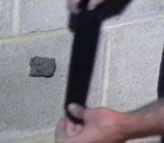 |
| Holds |
| Ordering info |
| Video Center |
| Plastic Sucks! |
| Editor's Choice |
| Training Info |
| Wall build info |
| Links |
| Bouldering |
| Coming soon |
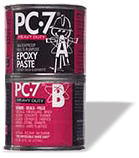
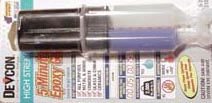
PC-7 is the traditional epoxy for gluing climbing holds onto walls. PC-7 is the stuff used by many departments of transportation for gluing reflectors to highways. PC-7 is available at most large hardware stores and comes in two parts which must be mixed 50:50 before using. The advantage of PC-7 for gluing on holds is it's thick, tar-like consistancy. Unfortunately this also makes it very hard to measure out and mix. PC-7 takes about a day to harden.
If you're in a hurry, the best glue to use is a liquid fast cure epoxy that you mix with Cab-O-Sil (powered silica thckening agent) right before using. This has a better consistancy than PC-7 and is much easier to prepare since you are mixing liquids and thickening the glue AFTER it is mixed. Also you can use 5 minute epoxy which makes it easier to attatch larger holds that need to be held in place till the glue hardens. If you are gluing up a LOT of holds, the most convient glue to use are cartridge glues that you can purchase at concrete product stores. Systems for concrete crack repair or anchor fastening will work great for gluing on holds - but they are expensive.
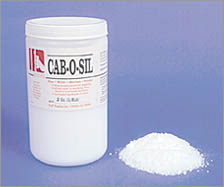
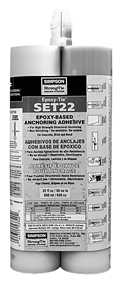
Polyester resin based adheasives such as Bondo can also be used to attach holds. Bondo is sold as auto body filler and is basically just Polyester resin with a fly ash filler. Bondo is not as strong as epoxy, has a noxious odor, and may not bond well to some surfaces - but it is relatively inexpensive. Polyester based resins require warm temperatures to cure so you can't use them in winter.
Take note that while there are other glues you can use besides epoxy, none of them are as strong so you can expect a few holds to come off in use. With epoxy, the bond is stronger than the substrate so if a hold comes off it usually takes part of the wall with it. Keep this in mind if you think you may need to remove the holds in the future.
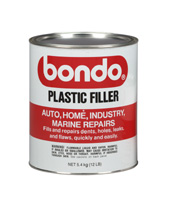
Just about any rock type can be used on a glue-on wall. Keep an eye out for neat rocks when you go on climbing trips or in urban settings where crushed stone is used. If you can't find any suitable rocks for gluing in the area you live, try railroad beds as you can usually find these just about any where in the country (check out topo maps). Crushed rock such as found on railroad beds works very well for glue-on holds because it is relatively fresh (not chemically weakened) and has already been broken up along natural fractures in the rock so the resulting shape is usually quite strong. Railroad bed rock is typically limestone or a form of granite. Limestone will polish with use so it should not be your first choice. If you desire rounded holds, river rocks work quite well and are usually quite strong. If you use epoxy, there really isn't a limit to the size of rocks you can glue. I've climbed on marble sized pebbles that were very securely glued on. Bowling ball sized holds can be just as secure provided you find a way to keep the thing in place while the glue sets.
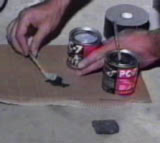
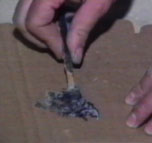
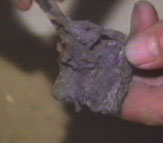
If you are using a 2 part epoxy, make sure to mix up the stuff in a paper cup first. Don't mix the stuff directly on the rock being glued as you will wind up with a layer of unmixed glue on the rock and this will prevent a good bond. If you are using fast cure epoxy or polyester resin don't mix up more than you can use before it hardens. After you stick the hold on the wall you need to devise a system to hold the rock in place till it drys. The easiest method is to use lots of duct tape. For larger holds you can use 5-minute epoxy and physically hold the rock in place till it hardens Another method to hold large rocks in place is to place long Tapcons under the rock to keep it from sliding down the wall. Tapcons take a short time to place and can easily be removed and reused. A tapcon can also be used to hold a modular hold in place through the bolt hole (with a small washer). This is useful if you want to glue a route up a 30 degree overhaning wall on a mine colaspe. Don't even think about gluing holds on a natural cliff. It's wrong and everyone will hate you.
